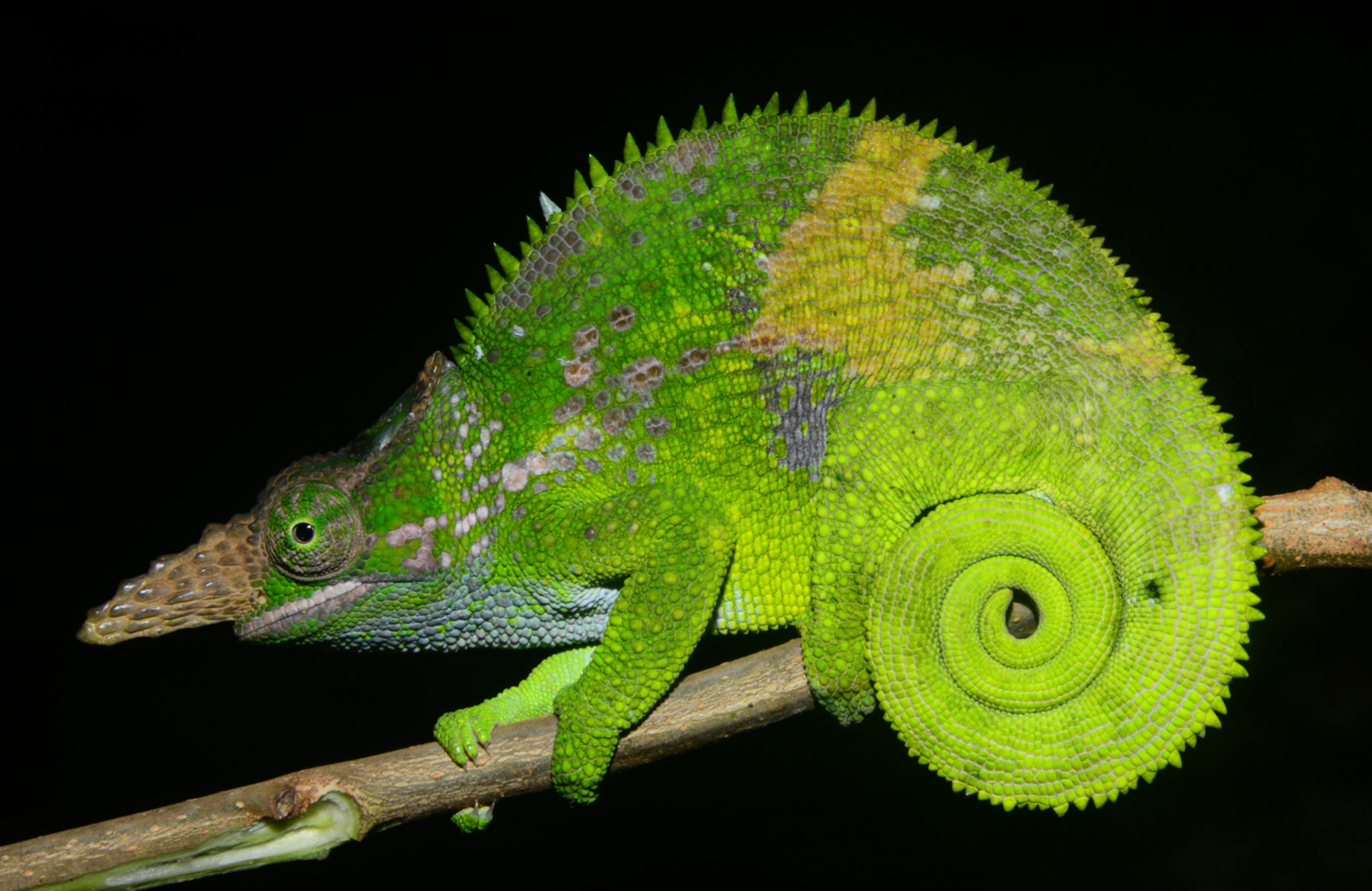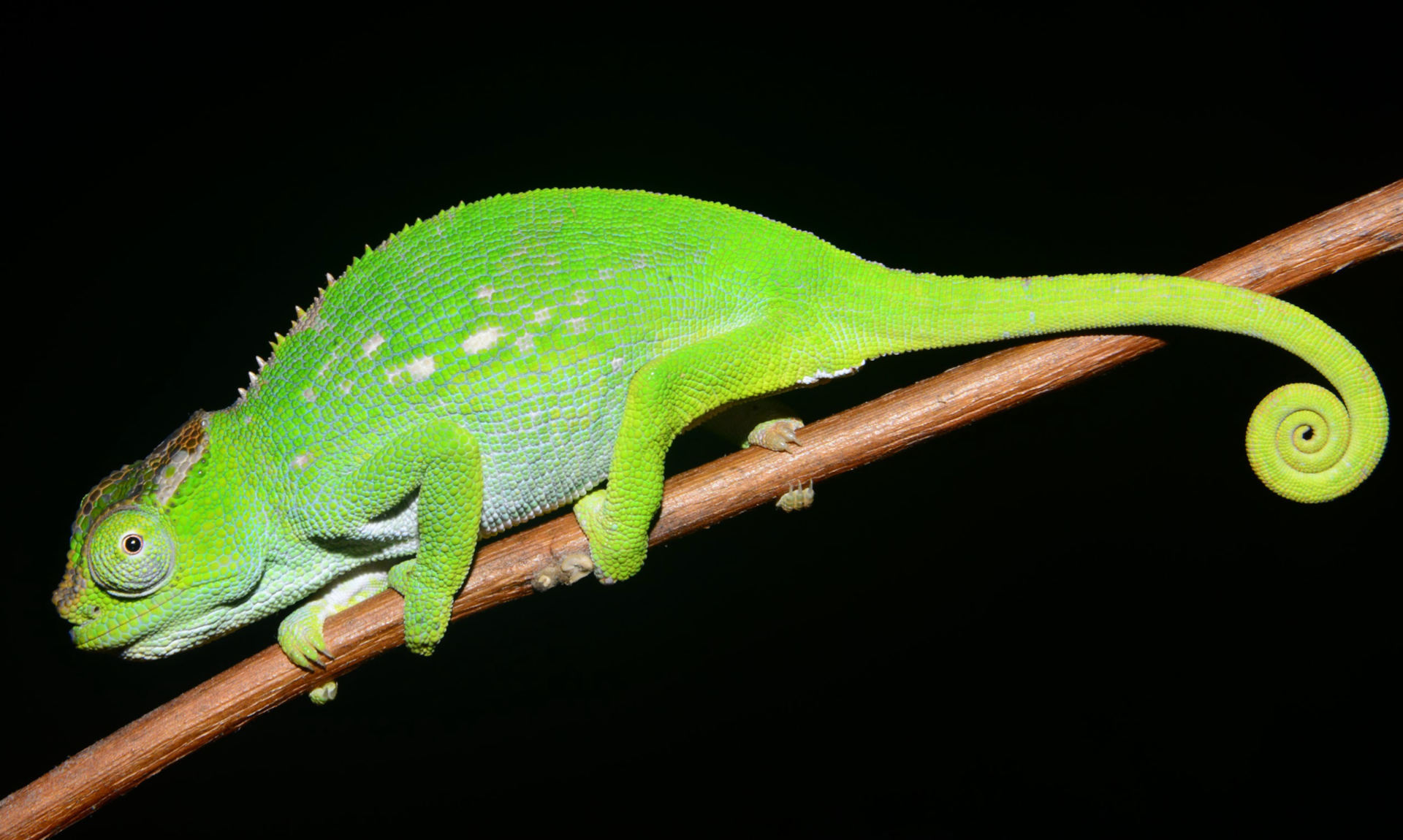Kinyongia multituberculata, an Endemic of W Usambara Mts., Tanzania


Kinyongia multituberculata, described by Tornier in 1899, is an arboreal chameleon species endemic to the montane forests of the West Usambara Mountains in northeastern Tanzania. Distinguished by its multiple dorsal conical tubercles—especially pronounced in males—it represents one of the most morphologically distinctive taxa within the genus. The species inhabits mid- to high-elevation forest fragments (above 1,000 m a.s.l.), often within degraded or edge habitats, though it shows strong dependence on intact canopy cover.
Its microhabitat preferences are tightly linked to humidity, vertical stratification, and thermal buffering offered by montane forest ecosystems. While its range is limited to one mountain only, populations have been documented in protected areas and in agrar land. Nonetheless, ongoing fragmentation due to agriculture and logging poses significant threats to its long-term viability.
Sexual dimorphism is conspicuous: males possess elongated, laterally flattened rostral appendages and more complex scalation, playing a role in territorial or mating displays and species/sex recognition. Reproductive biology remains understudied, though oviparity is known, consistent with congeners. Genetic data place it within the Kinyongia fischeri complex, though its precise phylogenetic relationships require further resolution.
As an indicator of montane forest health, K. multituberculata warrants priority attention in regional conservation planning.